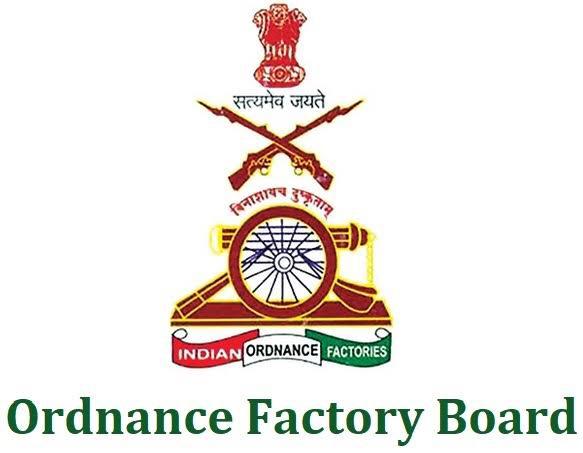Leveraging the strengths of the OFB in a Post Covid Era
- May 15, 2020
- Posted by: Lt Gen Gautam Moorthy (Retd)
- Categories: Defence Production, Domestic Issues, General Topics, Uncategorized

LEVERAGING STRENGTHS OF THE OFB IN A POST COVID ERA
By
Lt Gen Gautam Moorthy, PVSM, AVSM, VSM (Retd)
The price of doing the same old thing is higher than the price of change
-Bill Clinton
The Ordnance Factory Board which oversees 41 Defence oriented production units and with a proud history of over 200 years of manufacturing military equipment and stores primarily for the Indian Army is on the cusp of a historic transformation in its approach to this dedicated support that it is providing. This is the major takeaway that one gleaned after attending a webinar organised under the aegis of the CII with the OFB on “Doing Business with the Defence Sector Post COVID-19” on 09 May 2020.
The OFB has traditionally relied on its own infrastructure, technical knowhow and trained manpower to meet the requirements of its primary customer ie the Indian Army. However, over the years it has been outsourcing the manufacture of components and parts to industry. OFB owned design items are responsible for about 20 % of its output, ie about Rs 2500 crore per year. It has over 4000 vendors registered for components and sub systems on whom it places orders worth Rs 4000-5000 crores every year. It also imports components worth about Rs 700-1000 crores annually.
The production philosophy of the OFB is based on transfer of technology (TOT) with them buying the TOT from the foreign principals and then indigenising the equipment to achieve up to 97% indigenisation in some cases. However, when it comes to upgrades, all upgrades thus far have been imported. The indigenisation of upgrades is followed up subsequently.
What the OFB has come to realise that this process is a drag besides not being cost effective. Hence the OFB is looking to Indian industry to step in with the design and upgrades as repeated imports are a huge drain on the exchequer. As of now co- development with private partners is being resorted to but the cases are far and few between. This hand holding needs to be encouraged. A model of design, development and co-production initially by the OFB and an industry partner(s) is the way ahead. The domain knowledge of the OFB coupled with the R&D strength of the industry can result in the production of prototypes for the user which will subsequently lead to productionisation of the components in the numbers required. For subsequent years the industry partner(s) should be given the licence to manufacture till the complete life of the equipment with an agreed upon suitable price increase year upon year. This indigenously designed and indigenously manufactured model (IDIM) is the correct way ahead. This will give confidence to the vendors to enthusiastically participate in the process. However, the OFB should re-write its procedures and modify them suitably to incorporate the above.
Industrial clusters can be developed to ensure competition and representative pricing without allowing of cartelisation to set in. Thus a mechanism to evolve a long term partnership with two or three vendors would be imperative for this to succeed. Besides, a price variation mechanism too should also be formulated. In this, the OFB is uniquely placed to show the way forward to other Govt agencies.
The other area that the OFB is looking at is outsourcing. As of now, 88% of what it procures is indigenous and only 12% imported. Of the indigenous component, 75% of the OFB orders are on MSMEs. This again should be on a partnership model, a partnership for life or till either partner calls for the parting of ways. For too long the Indian system of procurement has been held hostage to the three quotation dictatorial regime. The time has come to move out of it and find a better method in deciding the vendor(s).
The OFB also needs to focus upon manufacturing and Quality Control. Manufacturing has to evolve to Industry 4.0 with a focus on automation in manufacturing, data exchange, customisation of products with interconnectivity, flow of information with transparency and technical assistance coupled with de-centralized decision making. New quality control systems with vendors should be developed using virtual tools and AI as the old system has often been found wanting and not in consonance with the user’s aspirations.
As the country emerges from the economic downturn hastened by COVID-19, there is a strong case for the Public Private Partnership (PPP) model to take root and flower in every sphere of industrial and economic activity. The OFB higher management too is keenly aware of this and ready to leverage such a model to its benefit. Such a model apart from being beneficial to the partner(s), is most importantly, the road to meeting the users’ aspirations. The areas that the OFB is looking to establish Centres of Excellence and concentrate upon are the Future Armoured Vehicle, Future Air Defence System, Futuristic Ammunition for Tanks and Artillery Guns, Precision Guided & Smoke Ammunition, Electronic Systems & Sub Systems, High Power Engines, Fire Control Systems and Futuristic Materials. Only a long term relationship can result in meeting these goals.
Another sphere of manufacturing that is perhaps considered unimportant and therefore lends itself to redundancy, is the field low technology equipment and items. Regrettably, this is being given a short shrift as it is widely believed that there is sufficient expertise for such items within the country and hence the OFB can move out of this realm. Nothing can be farther from the truth. The OFB has a dedicated group for this ie the Ordnance Equipment Group which has under it five factories dealing with production of parachutes, clothing and troop comfort items. Its biggest strength lies in the exceptional quality of its products, with Boot High Ankle DVS (Improved Version) being a prime example, apart from uniforms and tentage.
The OEF Group is uniquely placed to foray into many other specialised medium to low technology equipment that is not difficult for its factories to manufacture. Such equipment pertains to the Nuclear, Biological & Chemical (NBC) family of clothing and equipment as well as those required by organisations such as National Disaster Response Force (NDRF). Some low cost, high quality items are already being manufactured by the factories under this group. As a response to the threat of COVID-19 and the requirement of the country, the OFB is producing around 2 lakh PPE kits per day. This would not have been the case had it not had the expertise and the wherewithal to do so. It is also producing hand sanitizers and supplying to the users. Similarly it can take on the production of decontamination kits and medical tents.
The Indian Army (IA), through the MGO’s Branch, imports almost all its inventory of special clothing, ski and mountaineering equipment. Here, the entire range can be made under the aegis of the OEF group. Product improvement and joint ventures with the industry must be undertaken in keeping with the ‘Make in India’ vision of the Hon’ble Prime Minister. Low technology items should not be ignored by the OFB as they seem easily to be passed onto trade but this is not the case. This is a significant area has its own underlying importance that the OFB needs to leverage with its infrastructure, expertise, trained manpower and domain knowledge.
In order to achieve its aims in a Post COVID-19 era, the OFB needs to undertake process automation besides revamping its procedures in tune with DPP-2020. Of particular importance to the OFB are the new clauses in the DPP that deal with Buy (Global–Manufacture in India); Leasing; Design and Development/Innovation; New category for Make in India–(Make III); A focussed approach towards available Military Materials and use of indigenous software; Focus on Innovation; Innovations for Defence Excellence (iDEX); An ‘Open Competition’ Approach too has been introduced. Key changes to standard contract terms and RFP procedures have been made. Several new clauses have been introduced in the standard contract documents which have far reaching implications for the seller/ vendors. New chapters have been introduced on Post Contract Management & Information & Communication Technology. Above all, the clauses on Leasing, Design, Development and Innovation, especially for upgrades are worthy of emulation and will prove to be a major enabler to the OFB procurement procedures.
Most importantly the OFB must not forget the old adage that the customer is king. For the ‘customer’ the OFB needs to substitute the word ‘user’. For far too long has the user been the victim of time and cost overruns that has led to an issue of credibility with the user. Perhaps it is due to the archaic procedures and processes that the OFB has been tied down with so far or it has been perhaps been a problem with the unionised workforce; whatever the case maybe, the OFB needs to break the shackles that are binding its functioning if it is to assume its rightful place in the pantheon of defence industries and compete with the others on a level playing field.
The OFB with a rich and proud legacy stands at the cusp of history. The COVID-19 crisis has given it an opportunity to initiate long term measures and make substantial changes to meet the aspirations of the user in a post COVID world of increasing threats but decreased finances. The OFB is uniquely placed to herald the march to self reliance that the PM has asked of the nation. This is an opportunity that it must not let go.
Lt Gen Gautam Moorthy, PVSM, AVSM, VSM (Retd) is a former DGOS and former Member Armed Forces Tribunal.
